Brown Trout: A fishing guide
Found everywhere from the chalk streams of England to the wilds of New Zealand, the brown trout is an iconic catch for countless anglers. Author Dom Garnett is your guide to the world’s most popular game fish.
Identification: Why on earth did they call it the ‘brown’ trout?
It’s a little baffling how such a beautiful fish got such a modest name. They vary from deep bronze to butter-gold, dotted with spots that are often red or even blue, besides black. Suffice to say, there are a hundred words you might use to describe this amazing sport fish- but “brown” wouldn’t be high on the list.
Natural beauty aside, there are so many reasons that generations of anglers have fallen for the brown trout. It is an aggressive, powerful fish to put a bend in any fishing rod. It also has a broad diet, from tiny midges to small fish, and can be caught on fly, lure or bait. And while it thrives in crystal clear water and spectacular locations, it is also adaptable and you’re as likely to find them on an urban river as a mountain stream.
It’s also worth mentioning sea trout here. Genetically, this is exactly the same species, Salmo trutta! These are browns that go out to sea for better feeding, which enables them to grow bigger and lay more eggs. For anglers, however, their behaviour and the tactics are very different here – so we’ll focus on regular brown trout.
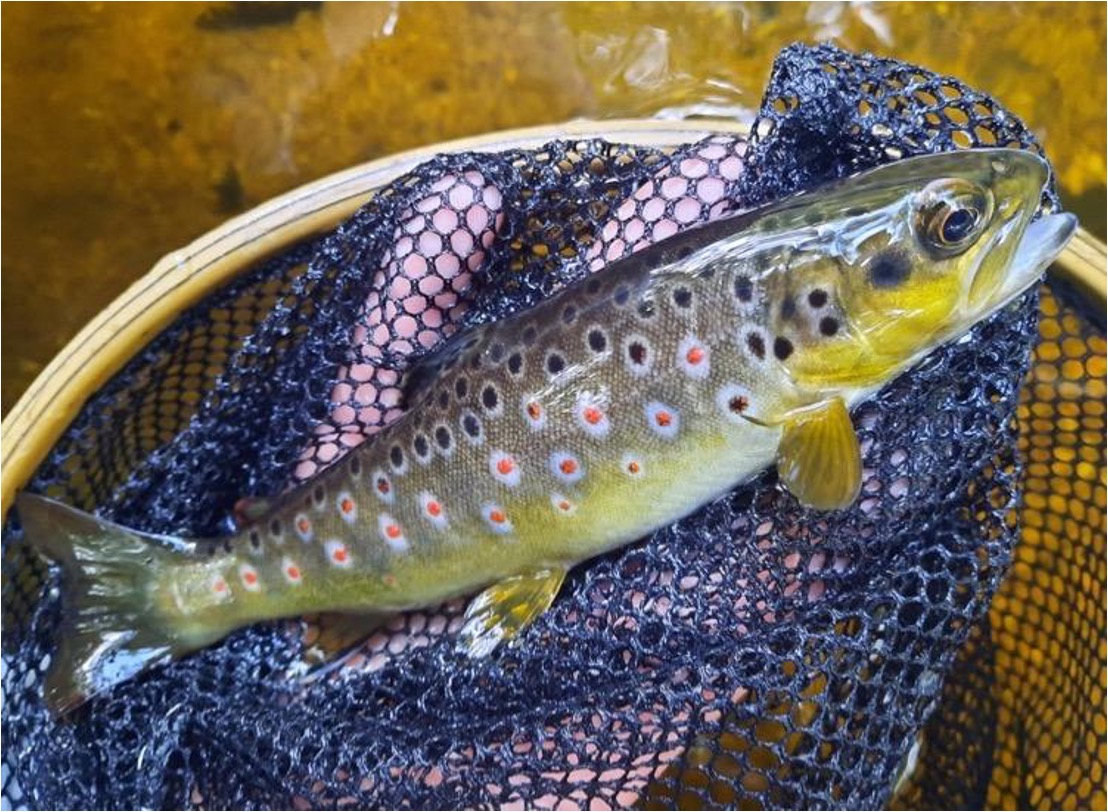
It’s not hard to fall in love with brown trout- they are stunning creatures, regardless of size.
Where can you find brown trout?
The short answer is all over the world! You can thank the British Empire for this, as homesick travellers decided to take their favourite fish everywhere they went, from North America to Australia.
More generally, though, you will find “brownies” almost anywhere you find clean, fast running rivers with healthy insect life. Throughout Britain, they thrive in stony rivers, especially where the pickings are rich and currents are fast. For this reason, they often like the upper reaches of rivers, where they find the well-oxygenated water and the gravel they need to spawn.
This is also a clue as to where to look for them. Unlike coarse fish such as bream and pike, that prefer slower, deeper water, they love the current. On a typical trout stream, the fish will be found in steady glides of water, as well as bends and pools, making the most of cover and feeding opportunities. One big tip for any trout fishing therefore is not to be afraid of fast flows or awkward spots- because trout love a good current as much as they love bits of water that are awkward to get to.
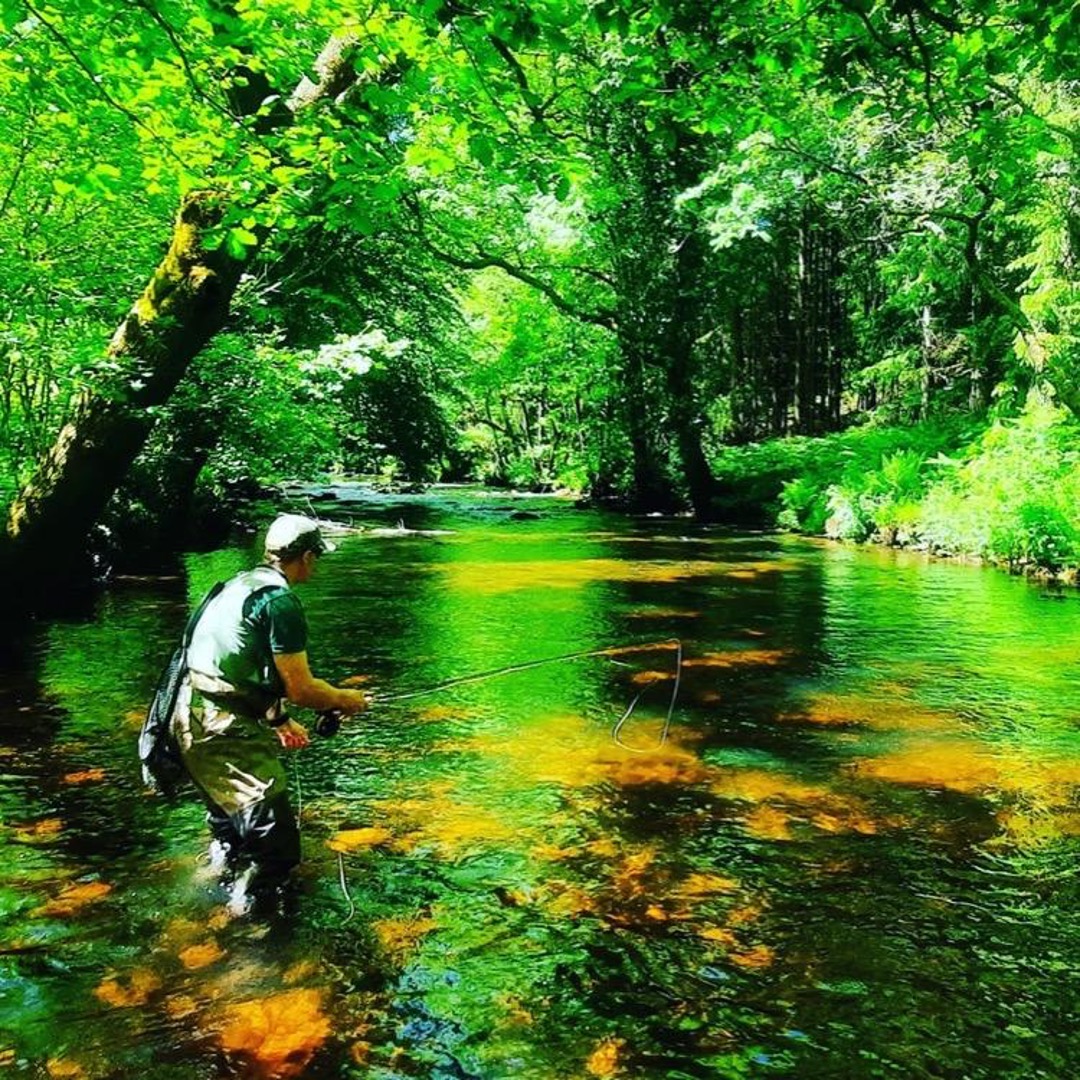
Trout fishing will take you to some amazing places.
Venues near me: where can I go fishing for trout?
We should also say a quick word about actual locations and legalities. Trout fishing varies a lot, and the brownie somehow manages to be both a plaything of the elite, but also an everyman’s fish.
Really prime water often commands high prices and private fishing signs. But this is not always the case and trout fishing can also be cheap or even free. Various “passport” schemes are a great example of this (see the end of this article), offering accessible trout fishing for low cost, so are many smaller clubs away from the famous waters. The bottom line is, it’s up to the angler to find out who runs the fishing and what the rules are! Very often, for instance, you’ll find trout fishing is “fly only”. We don’t make the rules up – but it’s also worth saying that if you fall in love with trout, fly fishing is way less difficult than is often assumed, gives you access to far more water, and is the most fun you can have with your trousers on!

Brown trout also thrive in towns and cities.
The fishing season: When am I allowed to fish for brown trout in England, Scotland, Wales and Northern Ireland?
Some confusion often occurs when it comes to fishing for trout. For one thing, brown trout spawn in the winter, so the season is quite different to fish like roach, bream and carp, which spawn in spring.
- In most of England, the trout season is March 15th to September 30th, although this can vary by region
- In most of Wales, it’s a similar story just with an earlier start, running from March 3rd to September 30th
- In Scotland, the traditional season is March 15th to October 6th
- In Northern Ireland, the season varies by venue- but tends to be 1st March to 30th September 24
If you catch a trout by accident, out of season, note that it must be released right away. If you absolutely must take a picture, the best practice is to keep the fish wet and do so in a landing net. The only normal exception to the usual rules is when you find stocked still waters with trout that are not wild and self sustaining. Some of these venues are open all year round. Check out the Environment agency site for byelaws and further info where you live
Do I need a special fishing licence to catch trout?
Your normal “non migratory trout and coarse fish” rod licence covers you for fishing in England in Wales, where you only need a different licence if you intend to fish for sea trout and salmon. You will also need a club or fishery ticket 99% of the time, however- so do check with whoever runs the fishery. Read our article on fishing licences or buy a rod licence online
In Scotland, no national rod licence is needed, just the permission of the landowner or fishery owner. Again, you cannot just rock up and fish – it’s up to you to find out who runs the fishing! Northern Ireland has its own separate rod licence
How to catch trout- Watercraft basics
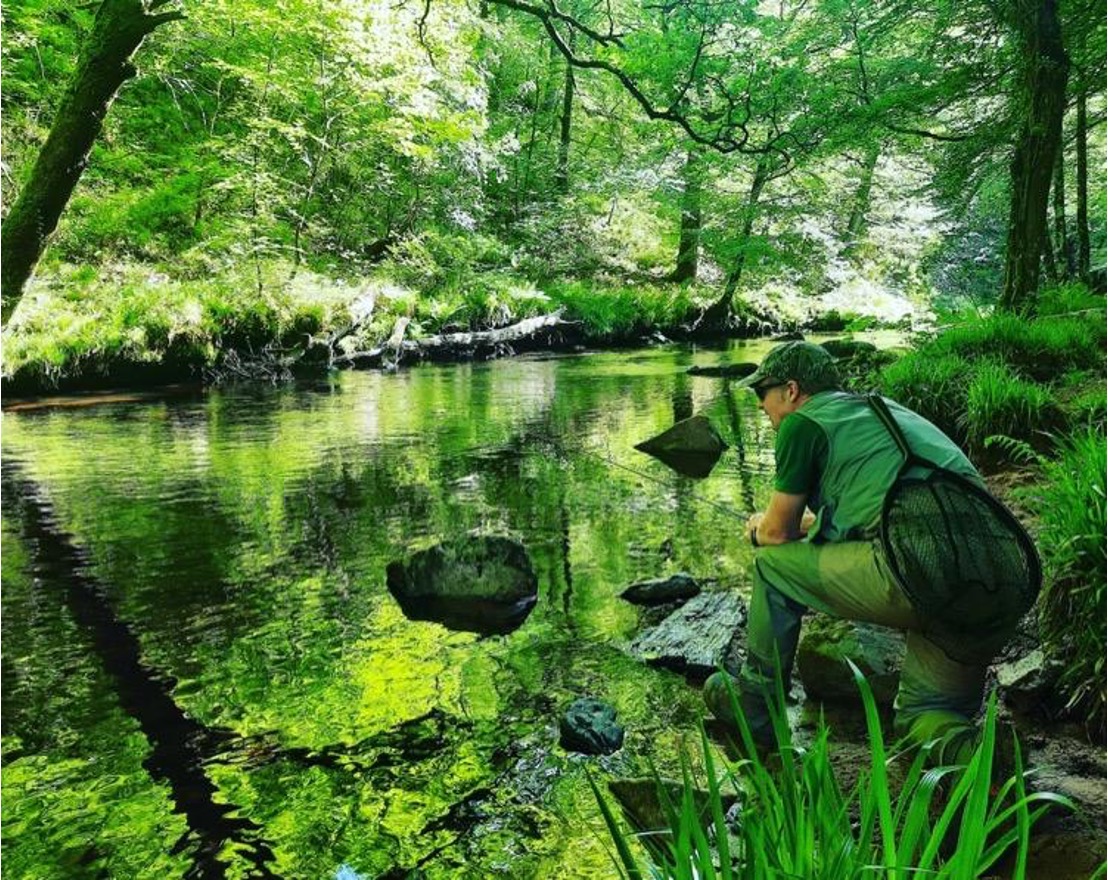
An angler sensibly keeps low, to avoid spooking their quarry.
The dynamic, ever-moving waters that suit trout are key to understanding the species. For one thing, they tend to sit facing directly into the flow. This means we tend to be best off approaching them from behind, and casting into the current, or “upstream”. Put it another way- if we try to catch trout while casting “downstream” in the same direction as the flow of water, the fish will all be looking at us!
While every river is different, trout like the same type of spots time and again. Your first cue is the flow- trout love this and while they won’t waste energy in churning, white water, they are very often sitting just off the fastest flow. Any area where fast and slow currents meet (a “crease”) is likely, as are any steady flows of water with depths of a foot or more.
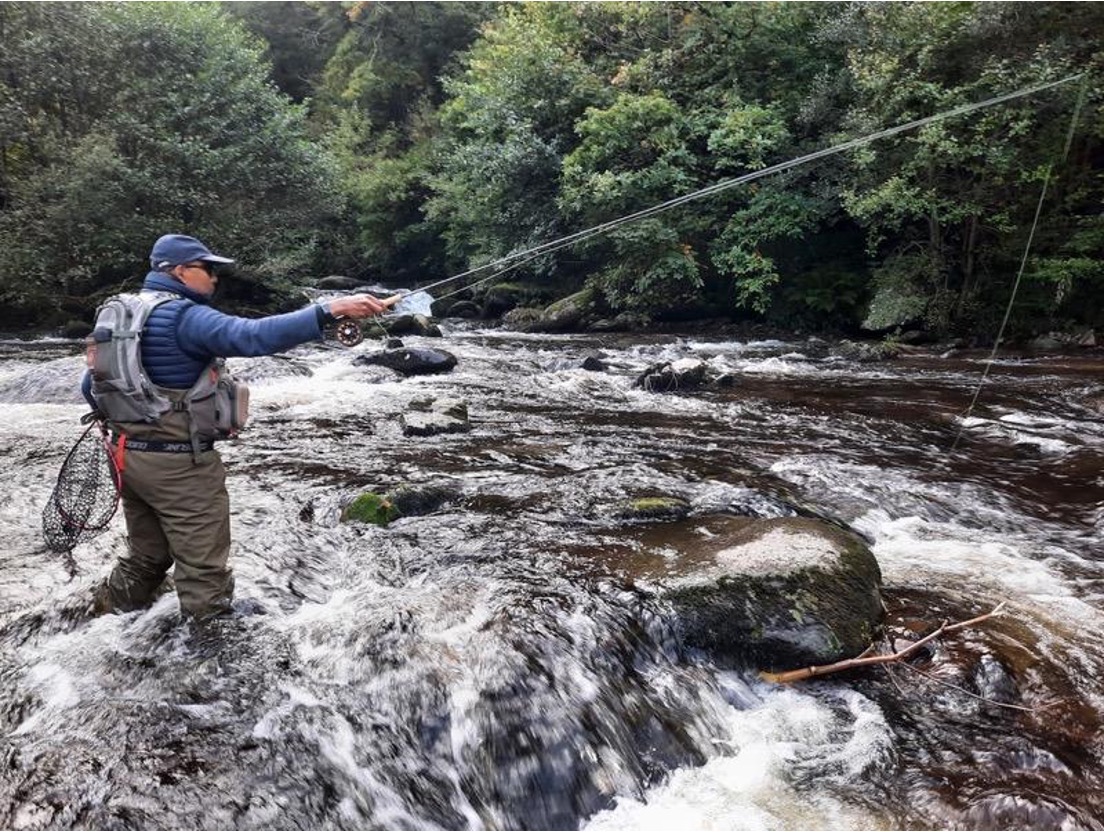
Unlike anglers, trout don’t fear fast water!
Bubbles are another great clue on most rivers- since they show us exactly the path that any hatching or fallen insects will follow. “Foam is home” as the guides say!
A word of warning here, though: Trout might be curious and aggressive fish, but their keen eyesight can also make them very wary of threats. This means that the angler must be careful and avoid spooking them at all costs- because a scared trout will never bite. Hence the first question to the trout fisher should often not be “what fly or bait should I use” but “how can I get close to the fish without spooking it?”
Wading stealthily, casting gently and avoiding any actions that could scare fish are thus vital- while no trout fisher should be without polarising glasses to cut out glare and observe these shy fish. And if the river is very clear and low, you might find that you fare better in areas where there is faster or disturbed water- because the trout spot us less readily here than they do in smooth, steady water. This might also explain why lake anglers fare better on days with some breeze and commotion, rather than flat calm conditions.
To put it another way, all trout fishing is a game of hide and seek- and it’s imperative we find the fish before the reverse happens! This is also why you will find me ducking, sneaking and even watching trout while lying on my belly.
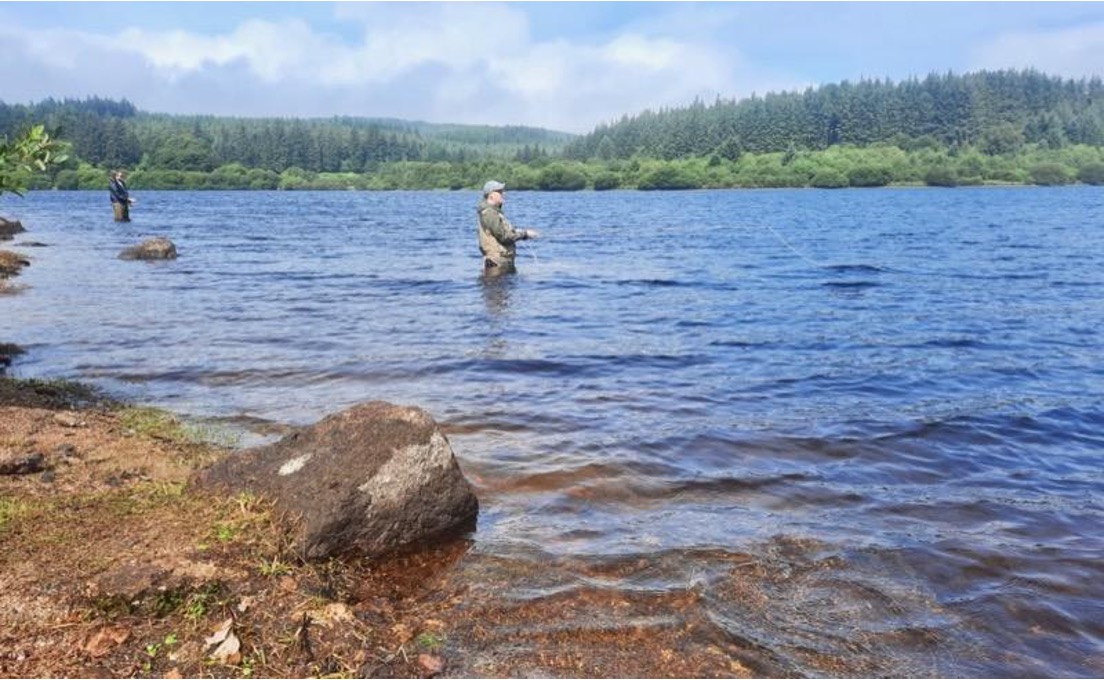
Stillwaters, both natural and manmade, are also prime for brownies.
Stillwaters are another game to rivers- but also reward stealth and detective work! Rise forms are your best location guide of all, but failing that, a “cast and move” policy is best. Lake trout tend to be territorial, so you must find them rather than relying on them to come to you. Depending on the season and water conditions, they might be very close to the bank or in deeper water a little further from the bank. Just as river trout like the flow, lake trout love the wind- so don’t be afraid to fish right in the teeth of it because the fish are likely to be active as the breeze oxygenates the water and blows in insects.
Trout fishing methods, and catch and release rules
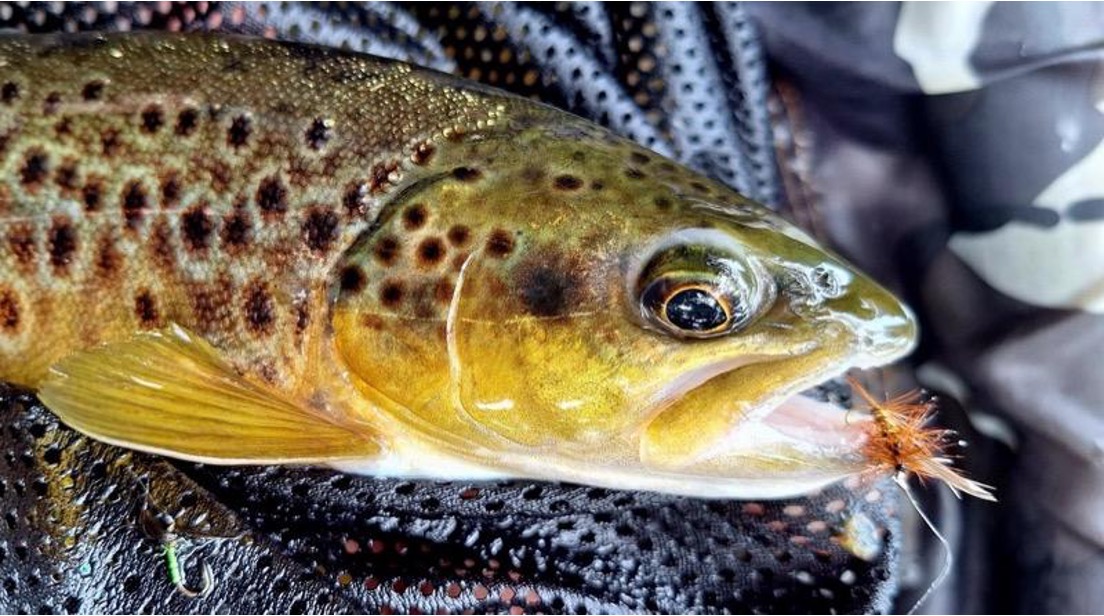
Like it or not, fly fishing is often the only method permitted. Why not learn and open up hundreds of venues for your angling?
Like it or now, brown trout are absolutely synonymous with fly fishing above any other method. This is for several reasons. First, they are creatures that feed on a wide variety of insects and invertebrates. Imitating these and taking on fish with light tackle is what many anglers consider the pinnacle of the sport!
Whisper it gently, but this might also be because trout can be quite predictably easy to catch on bait. Sharp-eyed they might be, but trout really aren’t the brightest creatures. Furthermore, they have a tendency to swallow live bait in an instant- and with wild fish populations declining in modern times, the last thing we want is to needlessly deep-hook and kill fish. In fact, most of the time brown trout fishing is strictly catch and release.
Lure fishing is, of course, another way to catch them. Where permitted it can be very effective- although you should get rid of harsh treble hooks for catch and release fishing.
Bait fishing is often forbidden in the UK – but where permitted, such as on free fisheries, you should do so with great care. Absolutely paramount to this is using barbless hooks and striking bites immediately to avoid deep hooking, which is a big risk with worms and maggots.
Various bait fishing methods will work. Float fishing is fun – and allows you to “trot” a bait on rivers or allow it to drift and search lots of water on lakes. Or you could fish a leger or swimfeeder. Drop shot with a worm is also brilliant- and helps prevent deep hooking. Worms, maggots and even cheese all work well for trout. Regardless of the bait, thought, please do go barbless and hit bites early.
What fishing tackle do I need to catch trout?
So, where do we start with deciding what fishing tackle to use for trout? That’s a massive question, but a few rules apply anywhere. Firstly, we look at the location and size of the fish. If it’s a tiny stream with mostly small trout, a rod of just seven feet might be required along with light lines – not only to avoid catching trees, but to get good sport from modest sized fish.
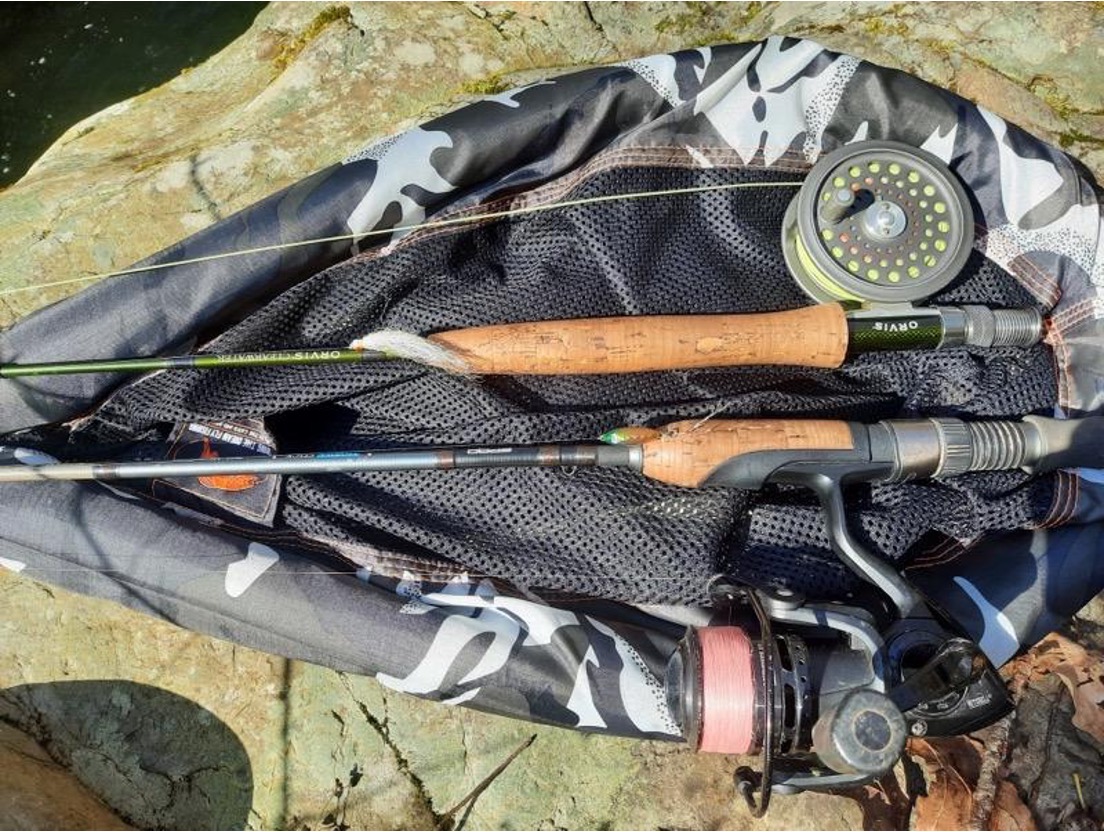
Light tackle is the norm for most trout fishing.
On a large lake, on the other hand, a rod of nine or ten feet might be more appropriate, along with much stronger lines. Just as trout vary greatly in different places, there is no “one size fits all” approach! Here are some broad guidelines:
SMALL STREAM: 7-8ft fly rod in a 2, 3 or 4 weight. Light leaders down to 3lbs and typically small flies. For lure fishing, pick a an ultralight or LRF style setup with 5-10lb braid, light traces and the capability to cast lures as light as 2g.
LARGER RIVER: You could still use the “toothpick” rod to cast a dry fly, but longer rods also now come into play. A 9-10ft rod in a 3, 4 or 5 rating is ideal, offering longer casts and better control.
The lure or bait angler might step up to a rod of 9-10ft, capable of casting lures in the 5-15g bracket.
STILLWATERS: Typically, lake fly fishers use longer rods in the 9-10ft bracket, rated 5-7. Tackle is dictated by conditions and size of fish, but lakes tend to produce larger trout on average. Fluorocarbon leaders of 6-8lbs are the norm, along with slightly larger flies.
For the lure angler, light tackle is a joy to use, but always with a view to landing every fish hooked. An 7-9 foot rod that will cast even light lures from just 4-5g is ideal.
Best flies, lures and baits for trout
As for the best flies, lures and baits for trout, the list is endless. A great place to start is to keep your eyes peeled and see what they’re eating. Tiny mayflies might require a dainty little dry fly, whereas minnow-eating trout would be better fooled with a 2-3” streamer or perhaps a suitable plug or spoon in a gold or olive colour. The detective work is down to you- and this is what makes trout fishing so satisfying! These are not pellet fed pets, they are truly wild.
As for bait, trout are way less fussy. Since God was a boy, worms have been getting trout into trouble. Give them a lively worm and they’re a bit like modern politicians- they just can’t resist opening their mouths and getting into trouble.
On that note, though, it’s also fair to say that trout are often opportunists. Sure, if there is a huge hatch of mayflies or caddis, they can become preoccupied with one thing. This is where specific fly patterns and lures come in. However, much of the rest of the time, the game is all about offering them something edible-looking without alarming them.
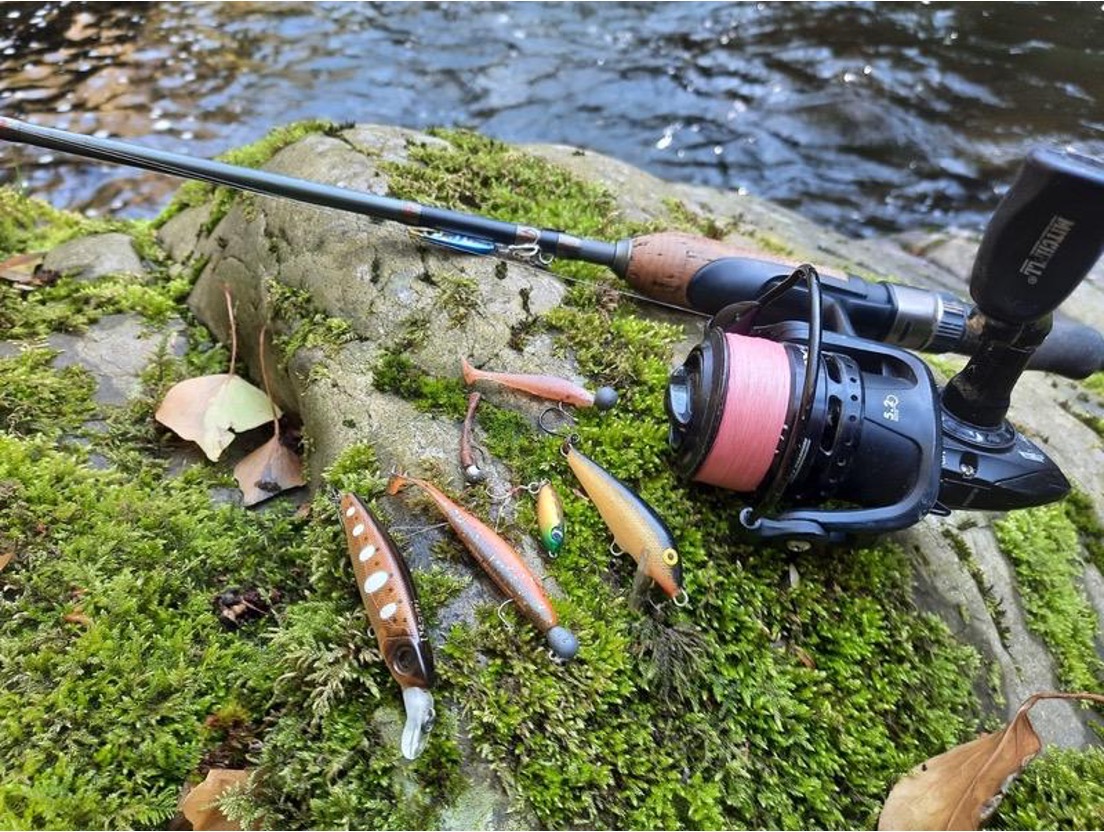
Pick small lures for trout- single hook spoons, plugs and plastics of 1-3” are ideal.
The short version of this lesson is: concentrate on not scaring the fish and offer them something that looks edible and not too crazy. This is why “general fit” fly patterns and lures work time and again. A Gold Ribbed Hare’s Ear or Diawl Bach doesn’t look like any bug in particular, just as a gold or silver spinner isn’t a perfect match for a bleak or minnow- it just looks edible enough for most self-respecting trout to have a go at! For those new to dry fly fishing, you can’t go too far wrong with simple, visible patterns such as the Klinkhamer and Elk Hair Caddis.
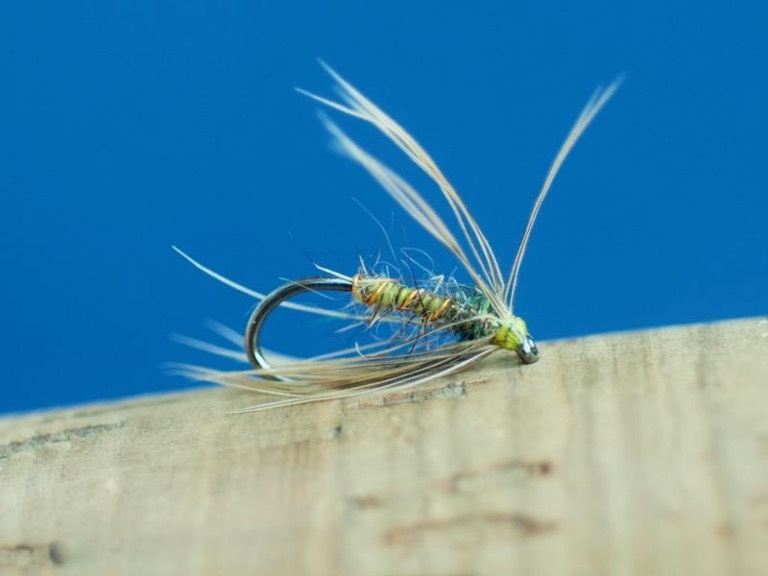
Don’t fret too much about realism if you’re new to trout. General fit flies, like this spider, are very effective.
For those starting on stillwaters, great universal patterns include the Diawl Bach, Bibio, Black and Peacock and Kate MacLaren- but there are countless patterns to try! Streamer type flies such as the Woolly Bugger can also work well, especially in dark colours.
Wherever you trout fish, the game has similarities but also regional and local flavour – so do ask questions and find out what the regulars find success with.
What do brown trout eat? Some more notes on fly life and prey
The subject of what trout eat has fascinated anglers for centuries- and indeed some of our most famous flies are very, very old ideas! However, we also have a tendency to get into a world of detail that can confuse the newcomer. In really simple terms, however, we can break down trout flies into just a handful of very basic, easy to understand categories. A mercy while we are learning to fish for trout:
Mayflies and upwinged flies
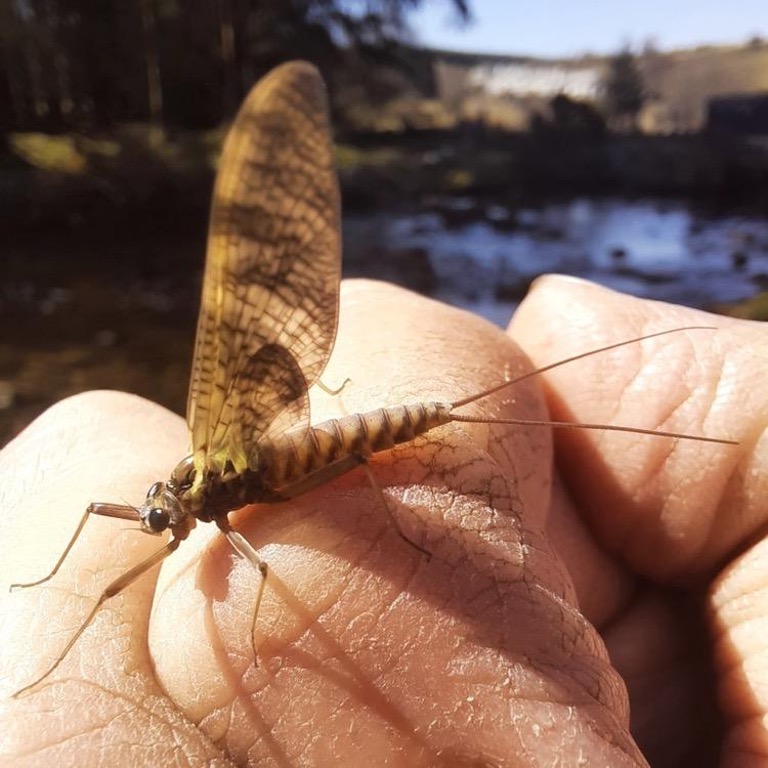
A large brook dun- just one of many mayfly species.
Mayflies look fairly dainty and have neat, triangular wings that sit neatly behind their backs at rest. Most are small and dull grey or greenish colours (hence are often called “olives”). Most of the time we refer to “mayflies” we mean the largest species – Ephemera danica which is large and cream coloured and spotted from late May onwards (surprise, surprise!).
Caddis or Sedge Flies
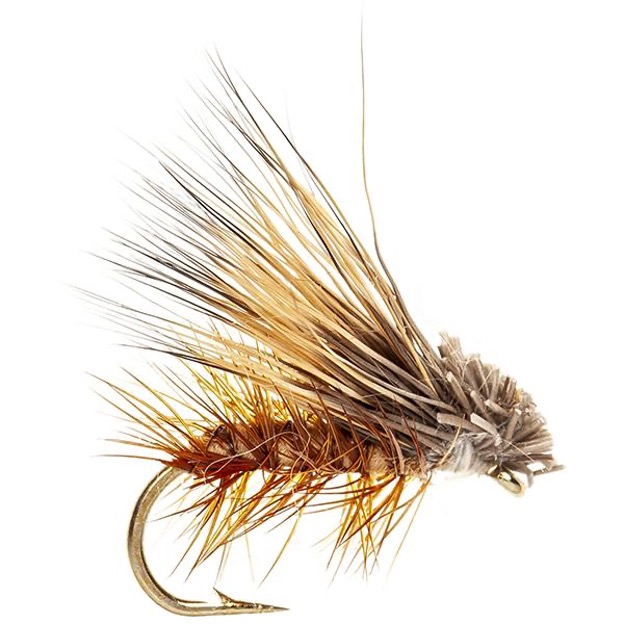
A suitable caddis copy- this is an Elk Hair Caddis, by Turrall Flies.
If you’ve spent any time by a lake or river in the evening, pretty much anywhere in the world, you will have seen messy, moth-like insects around water. These are usually caddis flies. There are dozens of types they all fit that “moth-like and skittery” profile, and trout love them, just as they love the larvae on the stream or lake bed.
Gnats, midges and buzzers
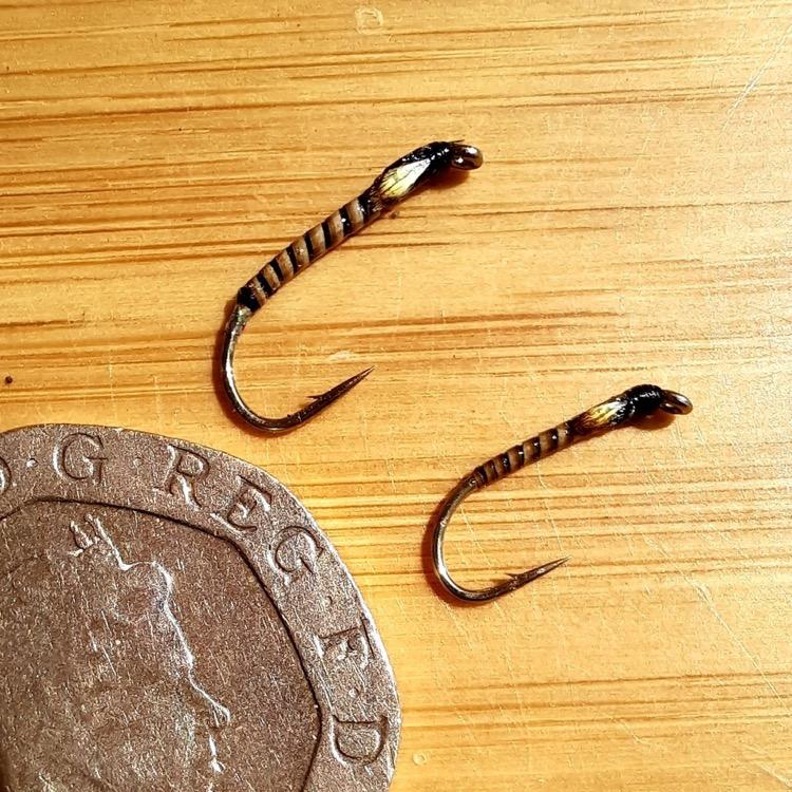
Simple buzzer copies- find almost any standing water outdoors and you’ll find this family of insects.
There are many tiny (and not to tiny) insects to be found around water that trout eat. You may spot swarms of teeny little midges in summer – or also larger samples, especially on still waters. These start life as simple, slim bodied larvae of many sizes and hues- not least of all the common bloodworm, found everywhere.
Terrestrials

This term covers pretty much all other bugs that end up in the water by accident, rather than design. Daddy longlegs, ants, beetles and grasshoppers are all terrestrials – and all fair game as trout food! They are also brilliant fun to imitate with a suitable fly or lure!
Other common prey…
Of course, trout eat a huge range of other food, but certain things crop up time and again.
Aquatic invertebrates
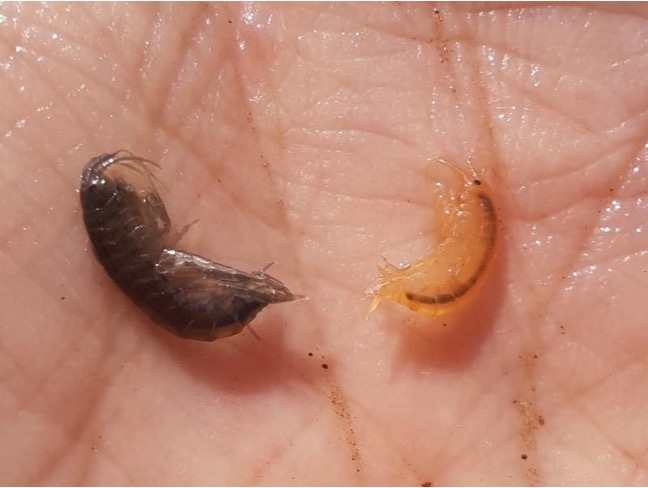
Freshwater shrimp- common trout grub on many rivers.
Without going the full David Bellamy on you, there are various tiny animals living in water that trout eat, from water boatmen to the larvae of damsels, dragonflies and other insects. Why not take time out with a fine net or turn some stones over to see what’s on the menu? Another really common find on most rivers are freshwater shrimp.
Smaller fish are prime trout food- and the biggest trout are primarily fish eaters. Minnows, bullheads, bleak and a stack of others all feature on the menu- and yes, big brown trout can also be cannibals, devouring their own grandkids!
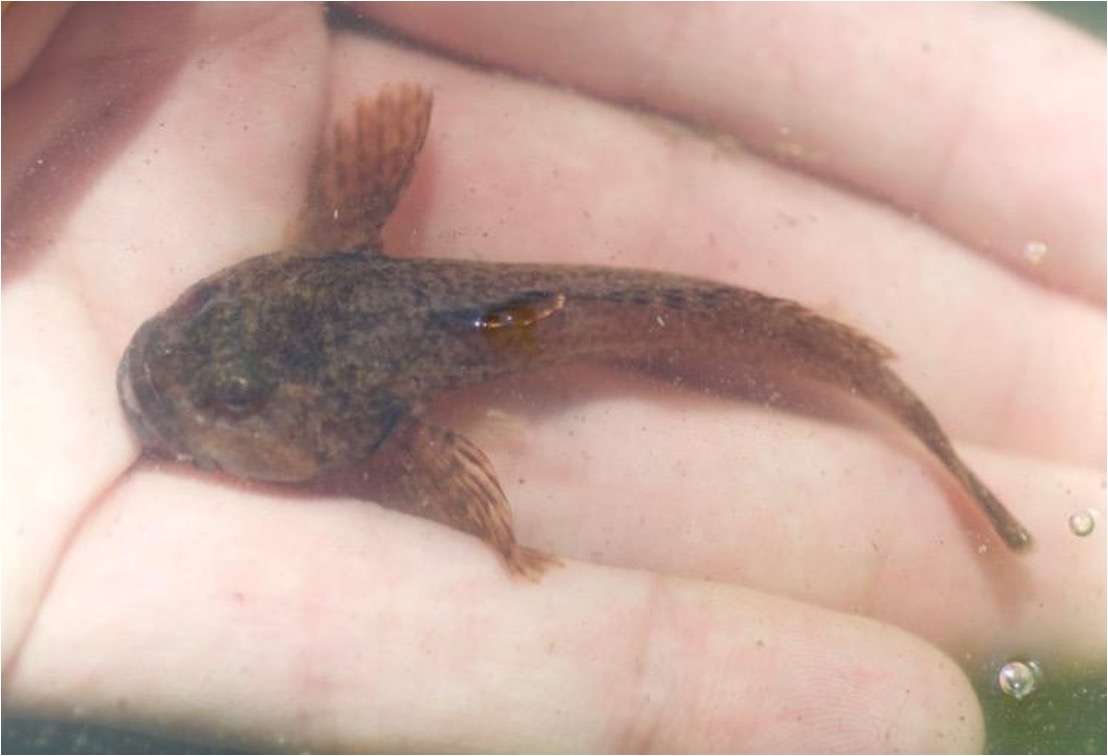
A juicy bullhead- a choice snack for a bigger trout!
Golden rules & top tips for brown trout fishing!
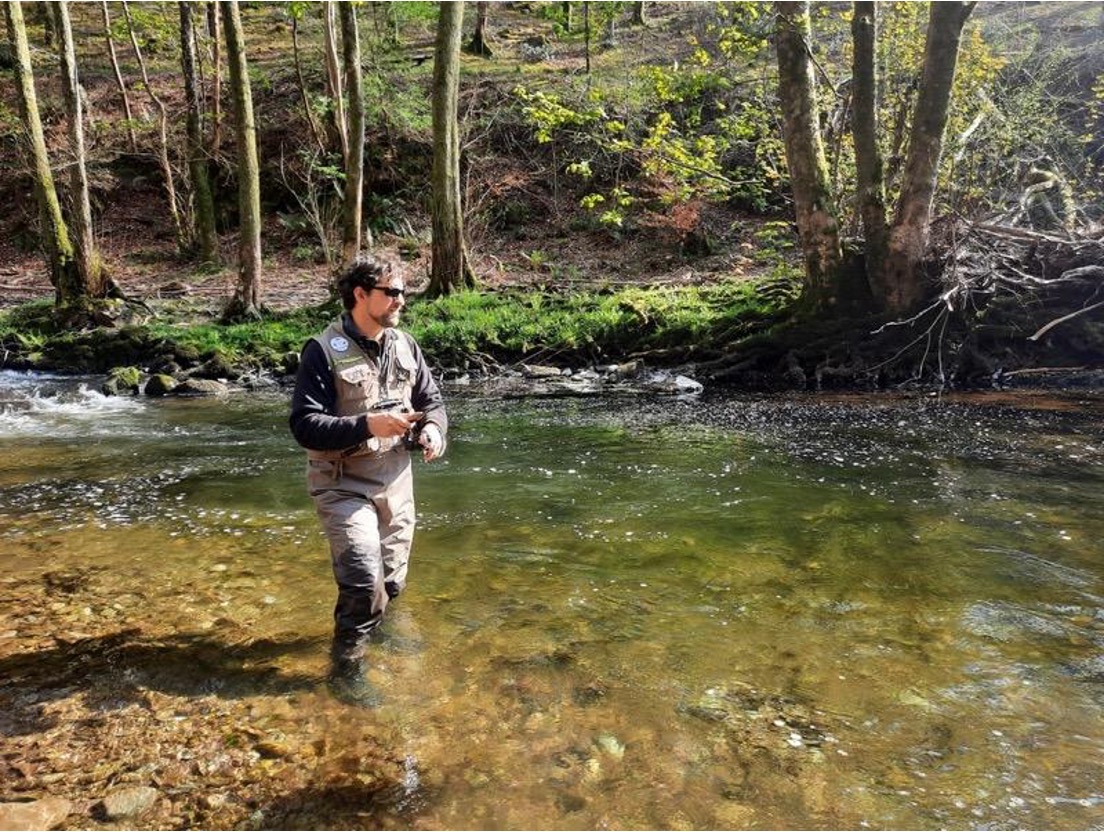
Lure fishing can be enjoyable- but do check it’s permitted and do fish single, barbless hooks.
Check the rules – it is up to you to find out who runs the fishing and what the rules are. Don’t just assume you can fish and unless explicitly stated, you must release trout unharmed.
Don’t scare the fish! Anglers get so obsessed with tackle, flies and lures that they often forget a much more important rule: don’t spook the fish! The best lure in the world won’t catch a trout that knows you’re there. Go slowly, keep a low profile and remember you are dealing with a wild animal!
Match the hatch – You don’t need to make the perfect copy of what trout are eating- but it helps massively if you have some idea! Get a rough match of size and colour, and times of the day when trout feed, and you are halfway to success.
Keep moving – Unlike rainbow trout, which are always on the move, browns tend to be territorial. They won’t come to you, so you must go to them! The more you explore, the more you’ll find.
Take a guide – The best possible way to learn to catch trout is to get a guide for the day. Whether it’s learning to cast or sussing out the best fishing spots, these professionals can give you years worth of knowhow for a day rate!
Don waders for any serious trout angler, waders are a must. So often they let you access water you couldn’t get to from the bank. Furthermore, they are great for conservation, as they make it much easier to keep trout wet while you unhook and release.
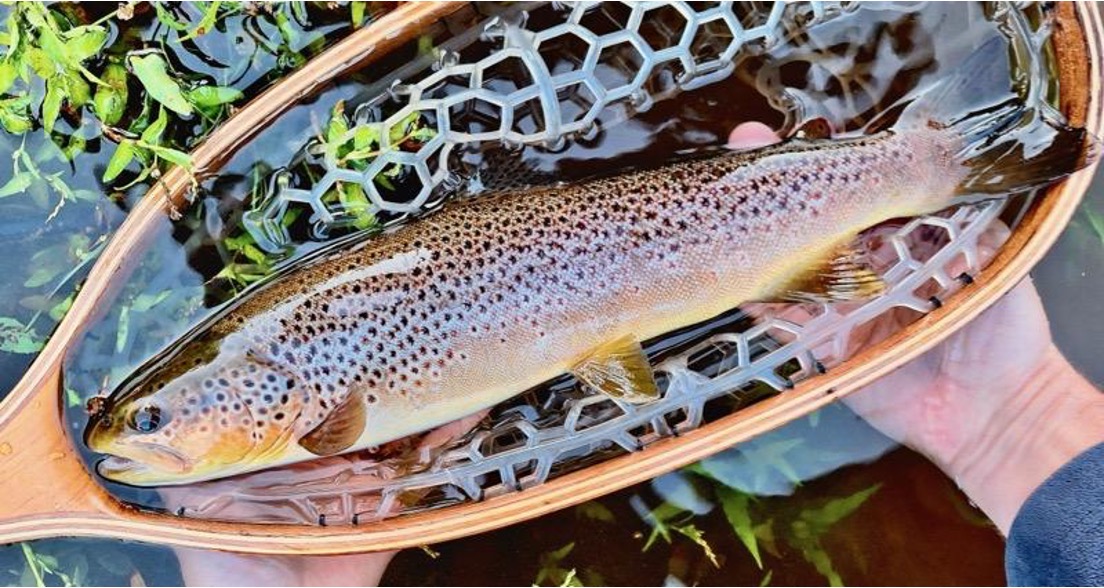
Photographing trout wet is much kinder than “grip and grin”. This way, these fragile fish hardly need to leave the water (and a net makes a lovely frame!).
Handle with care and release safely!
Some wise soul once said that a wild trout is too precious to catch only once. Game fish are quite fragile, too, so give them respect. The best way to handle trout is as little as possible. Keep them in a wet, submerged net if you need to dig out the camera. “Grip and grin” pictures are often needless- and more risky for the fish. In any case, trout look gorgeous framed against a wet landing net- and this way they will swim off totally unharmed.
Lose the barbs and treble hooks.
Most trout fishers now go barbless on wild fish, simply because they do less damage and are quicker to remove, which means less unnecessary handling. Get some quality forceps and crush those barbs! Treble hooks are rather crude for trout, too, and are a major reason why lure fishing gets banned on so many venues! Why not replace those crude trebles with barbless single hooks? The quicker this becomes the norm, the more likely lure fishing will become accepted more widely.
Further reading and useful links:
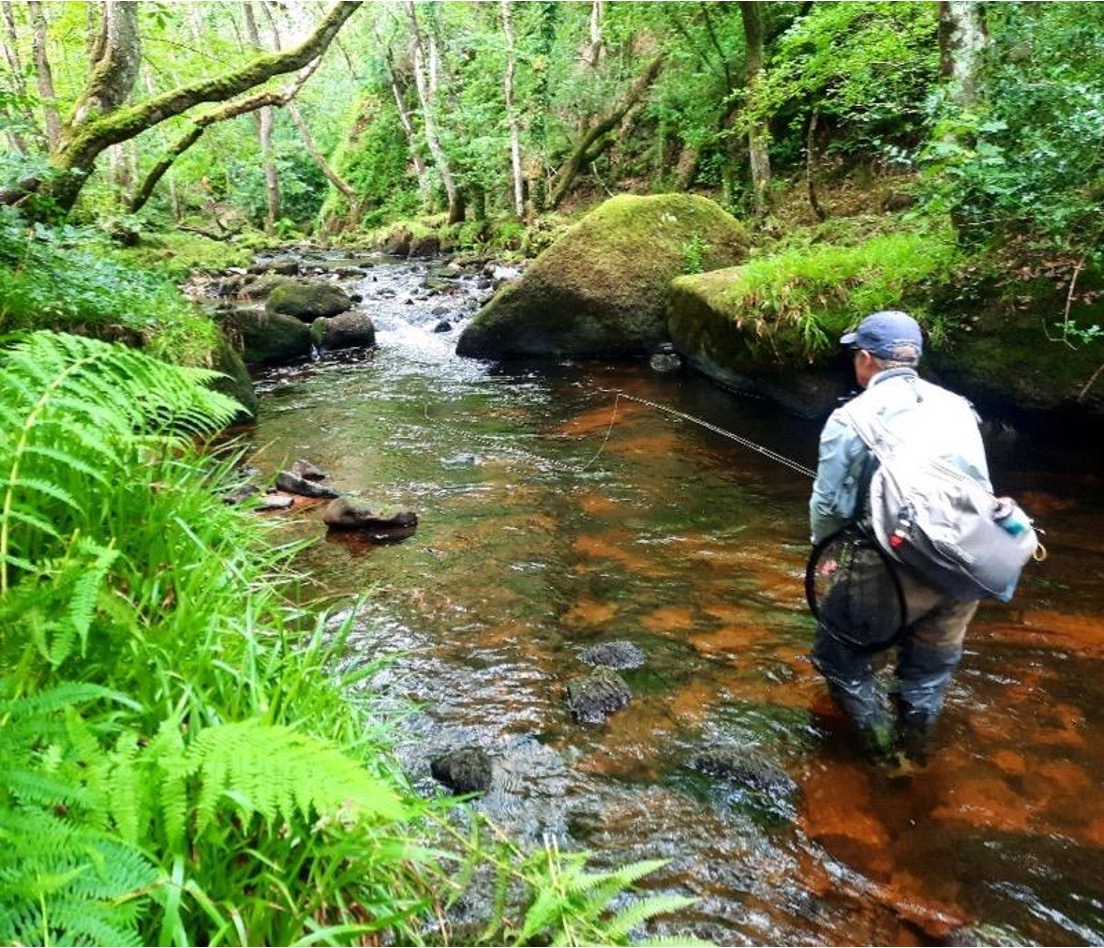
Brown trout are found throughout Britain- but finding the best fishing can take a little homework!
The Wild Trout Trust: An organisation working hard to protect wild waters and our native fish. https://www.wildtrout.org/
The Angling Trust: Worth joining for any angler who cares about our rivers and lakes. Your support helps fight for cleaner rivers- and the website also has news on various campaigns and details of coaching events and fisheries.
Angling Passports: These are a brilliant way to find affordable trout fishing across England and Wales! Most can be run off a mobile, too.
FishPass has miles of fishing right across the South West: https://fishpassapp.co.uk/
The Wye and Usk Foundation and its Fishing Passport scheme has excellent fishing across Wales and England: www.fishingpassport.co.uk
Top trout fishing books
There are too many to name, but a few really stand out if you are newish or looking to increase your understanding. The Haynes Fly Fishing Manual is about as thorough an introduction as you can get, while Peter Lapsley’s Pocket Guide to Matching the Hatch is brilliant for learning about common trout food. For the lure angler, the author’s own book Hooked on Lure Fishing has a dedicated trout chapter and stacks of knowhow on using ultralight tackle for maximum fun!

Catch more from Dom Garnett
Dom is a fishing guide and author based in South West England. Check out his website dgfishing.co.uk for his lure and fly fishing guiding services , books, flies and regular blog. You can also read him every week in the Angling Times, follow him on Instagram (@domgarnett_fishing) and see various angling films on his YouTube channel: https://www.youtube.com/@domgarnettfishing.
Similar articles
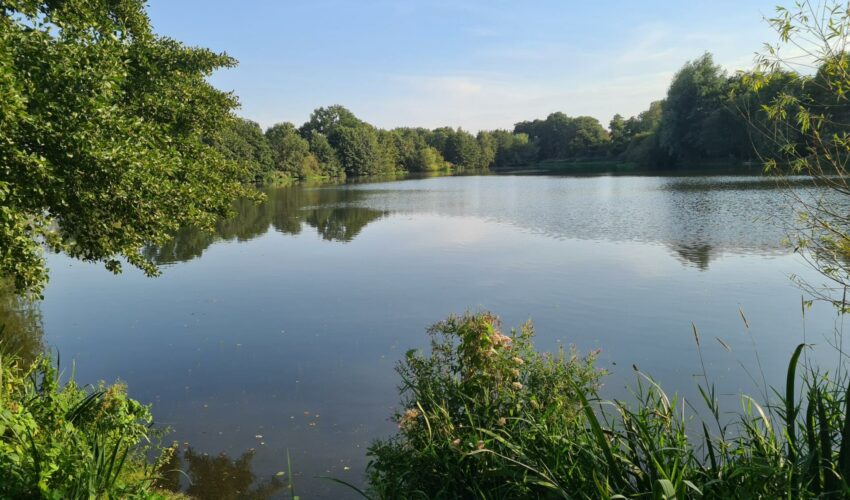
Our guide to fishing this spring (2025)
With the worst of the weather over (we hope!) and with spring finally here, it’s time to clean out that tackle box and get on the bank for some spring time fishing.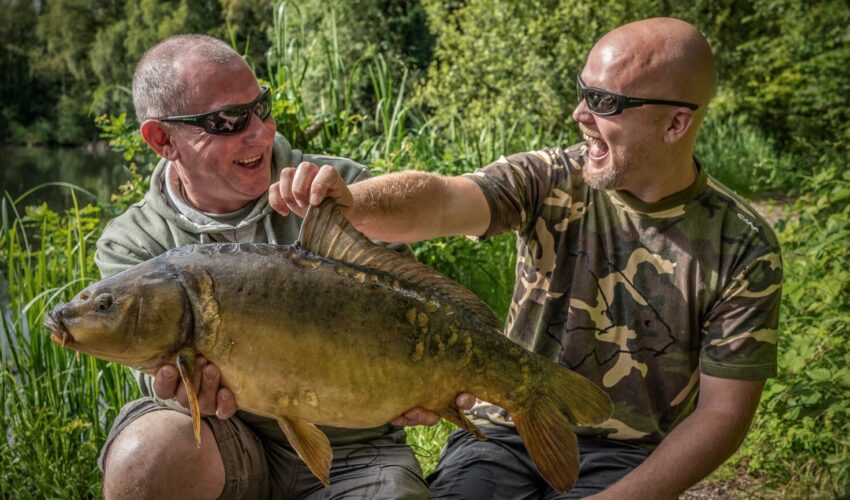
Take a friend fishing
Get ready to hit the water! From April 18th to May 4th, 2025, you can get a free fishing license to take a buddy out and show them what fishing’s all about. Yep, free! It’s all part of the “Take…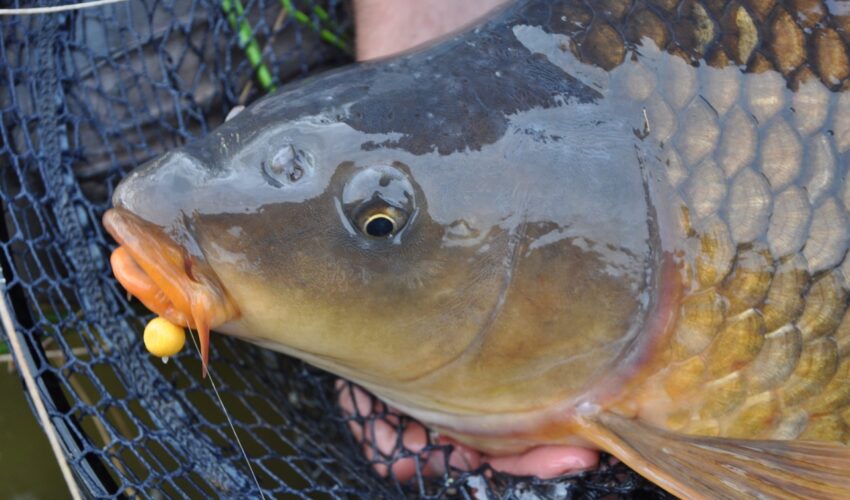
Fishing tips for hard days: How to get more bites
It happens to the best of anglers. Whether conditions are tough, the fish are moody, or our plans simply aren’t working, there are days we struggle. But what can you do to catch fish that seem unwilling to cooperate? There’s…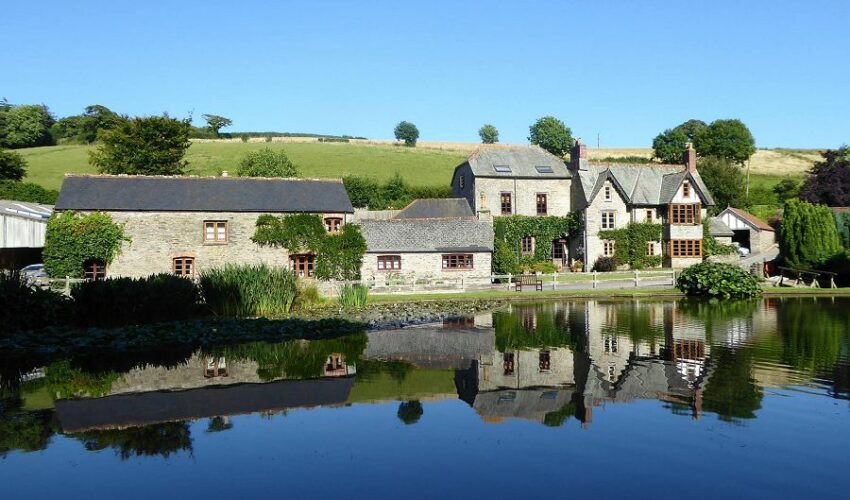
15% Off at Malston Mill – A Luxury Fishing Retreat in South Devon
Looking for the ultimate fishing getaway? Malston Mill Farm in South Devon is offering a 15% discount on 7-night bookings between March 8th and April 20th, 2025 – including Easter school holidays. It’s the perfect chance to book a stress-free,…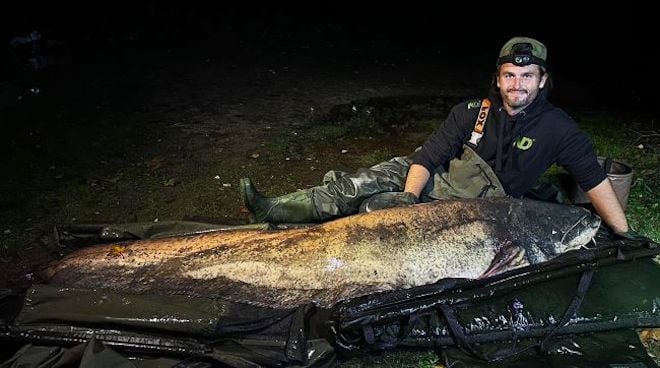
Angler shatters british record for Wels Catfish
Shaun Ing has landed a colossal Wels catfish, weighing in at a staggering 150lb 3oz, setting a new British record.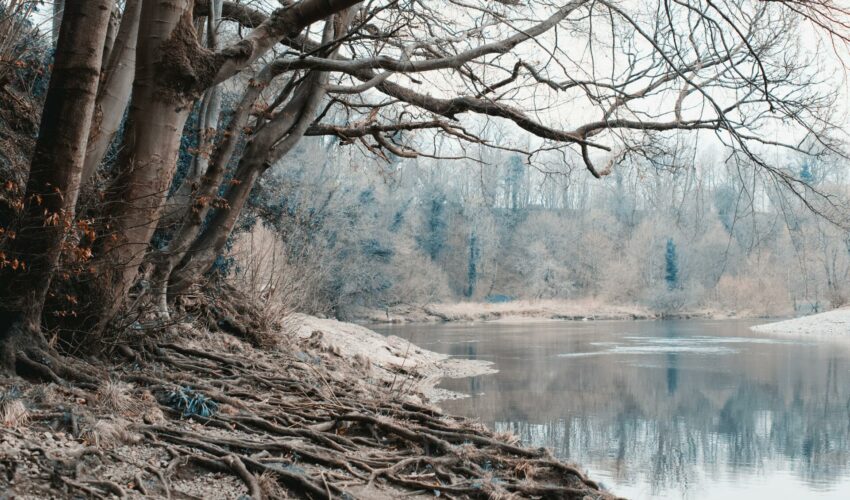
The cold truth: How water temperature impacts fish behaviour
Cold water slows fish metabolism, impacting their feeding and behaviour, but don’t let that put you off – read on to find out how and where to succeed in the UK’s chilly conditions.Search by Region or County
Find new places to go fishing in your local area or county by choosing your destination below




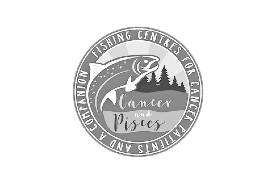




Comments